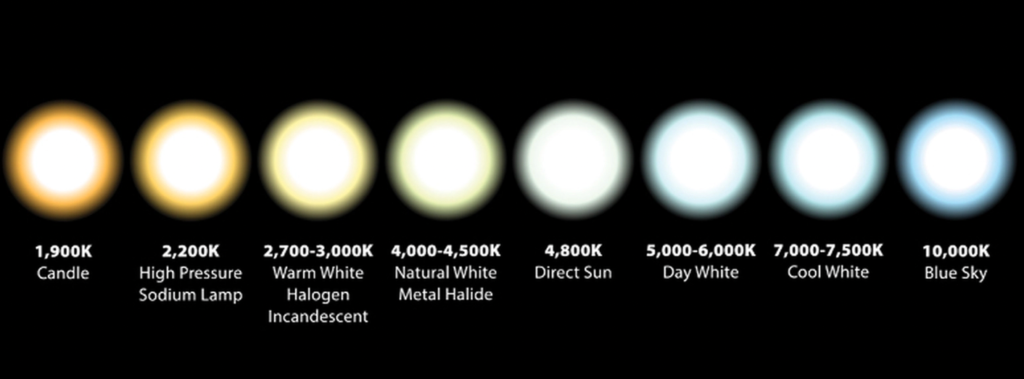The last post covered color temperature in paints. This one covers temperature in lighting.
I first came upon this issue (dating myself here) in college with slides. If you bought the wrong type of slide film all your slides came out horrible. (So sad.) Also, I am so good at guessing the wrong one. I joke that 50/50 guess really ends up about an 80/20 against me.
Anyway, temperature of light is real thing. For painters, this matters when taking photo references, when lighting your studio, and when shooting your work. In everyday life, it matters on creating the proper mood for your home.
The Basics
Some say that actual sunlight is blue, and some say it is warmer. But, remember the real color light is white (all of the colors together in light), and then what happens to it determines what it looks like. On a bright sunny day, the sky is blue, the sun is less blue than the sky.
The sun gives off white light. When you are in space. That is why we have the whole spectrum of colors that we have. The atmosphere scatters the shorter blue waves (making the sky look blue). The more atmosphere, the more scattering. Hence beautiful sunsets and sunrises, and those crazy apocalyptic feeling smokey skies. (The blue is scattering away, and the reds are making it towards you.)
Light Bulbs
Light is measured in degrees Kelvin (K). The range of light that is “white” is 1,000K to 10,000K.
However, 1000K seems really warm to us. 1900K is candlelight. 10,000K is blue light of a bright, blue sunny day.
In general, sunlight is about 4800-5900K. For art, you want to view it under around 2500-3000K. This gives you a soft-white glow, without going too warm. Anything very blue feels harsh like a hospital.
“Tungsten” is at 3200K. This was the common term for warmer light because it was literally the name of lighting filament that heated up. “Daylight” is 5500K (or thereabouts). Now the term “warm white” is more common than “tungsten” on lightbulbs you are going to see at the hardware store.

White Balance
The “White Balance” in a camera is setting to adjust where you want “white” to fall in the degrees K. Changes in the White Balance change the colors dramatically. 
The term “White Balance” comes from the practice of holding up a white piece of paper under the lighting that is going to be used, and adjusting the camera so that it registered that as “white.” What we are doing is changing the how the color temperature is read. Is that color 1900K or 5000K?
CRI
CRI stands for Color Rendering Index. It is a measurement of a light source’s ability to accurately show colors. The higher the CRI the more true the colors. Think about how in the sun, a painting can show you even more colors than you saw on the canvas in the shade. Now, we have LEDs with high CRI. These are the best bet for showing your art, and creating your art. Less heat and waste, along with an ability to mimic the CRI of sunlight is a great combo.
Hope this helps solve the mystery! And no matter what, let’s all rejoice in the fact that I haven’t ruined a set of slides in 20+ years.

